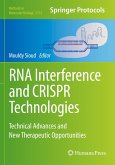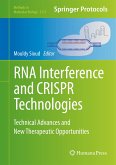Non-coding, inhibitory microRNAs have emerged as important modulators of cellular gene expression, through a process called RNA interference (RNAi). To date, hundreds of conserved and species-specific microRNAs have been identified in organisms ranging from single-celled algae to humans. Many of these tiny RNAs are now known to play fundamental roles in developmental biology and disease pathogenesis. In addition, RNAi has emerged as a technology useful for manipulating gene expression. In RNA Interference Techniques, expert researchers present detailed methods for designing and delivering artificial inhibitory RNAs to neural tissue and for detecting or cloning endogenous microRNAs, all in order to aid investigators' attempts to ask basic biological questions or develop therapeutics for dominant neurogenetic disorders, cancer, or viral infection. As a volume in the successful Neuromethods series, the chapters provide authoritative accounts of the most commonly used approaches in the field today.
Cutting-edge and concise, RNA Interference Techniques promises to support the vital research in the field of RNAi and miRNAs, ever-continuing to grow rapidly and gain increasing importance in basic and translational biology.
Cutting-edge and concise, RNA Interference Techniques promises to support the vital research in the field of RNAi and miRNAs, ever-continuing to grow rapidly and gain increasing importance in basic and translational biology.








